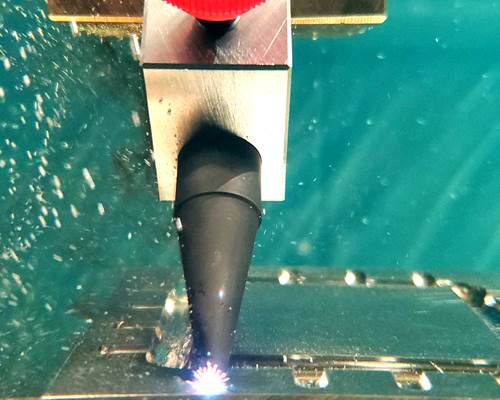Wire electrical discharge machining (EDM) is widely used to create dies, punches, mold components, special tooling, extrusion dies, airfoils, gears, medical instruments, carbide cutters, tool holders, jewelry and thousands of workpieces too numerous to list. Wire EDM can be used to cut electrically conductive materials to make parts that require a level of accuracy, intricacy and fine surface finish that traditional machining methods cannot achieve. A wire EDM unit can be programmed to cut complex shapes (small or large) to a dimensional tolerance of ±0.0001 inch and can be trusted to do so repeatedly and reliably. Unlike other types of machining, wire EDM exerts no cutting force on the workpiece and introduces no residual stress. There is little or no change in the mechanical properties of the material. Today’s wire EDM technology is capable of leaving virtually no thermal effects on the surface.

Wire EDM is best at cutting extremely hard materials such as tool steels, carbide, PCD (polycrystalline diamond), special alloys and parts requiring complex shapes, angles, tapers and sharp internal corners. Wire EDM can provide a surface finish as fine as 4 microinch Ra that may require no additional finishing or polishing. The wire EDM process leaves no burrs on the workpiece, a result which greatly reduces the need for subsequent operations. Wire EDM can be considered a time-saving, one-step process.
Wire EDM rarely calls for expensive workholding fixtures. One operator can run multiple machines.
How Wire EDM Works
A typical system consists of a CNC unit, a power supply with anti-electrolysis circuitry, a mechanism for automatic wire threading, a tank to contain the dielectric fluid, a chiller to keep the fluid at a steady temperature and a filtration system to keep the dielectric clean.
Wire EDM uses an electrically charged strand of wire fed from a reel and moved through upper and lower guides. The wire is energized as it passes across a power contact at the top and bottom. The distance between the guides can be adjusted to accommodate the thickness of the workpiece. A tightly controlled sequence of electrical discharges between the wire and the workpiece creates hundreds of thousands of sparks per second to remove the workpiece material. The heat of each electrical spark, estimated at around 15,000 to 21,000°F, melts away a microscopic bit of the workpiece material. Although the volume of metal removed during this short period of intense heat, lasting 1 millionth of a second or less, it is quite small, the frequency and multitude of sparks is an effective method to cut a narrow slot through very hard materials. The action of the spark may also remove material from the wire at the same time.
Submerging the wire and part in deionized water allows cutting debris to be flushed away. Splash flushing can be used when the part cannot be fully submerged, but a top and bottom nozzle must be constantly directed at the wire to help wash away debris. When machining submerged, cutting occurs in a more easily controlled environment and the flushing nozzles need to be adjusted only once.
A CNC unit moves the machine in an X-Y plane and can position the upper guide independently in the U-V axis, giving the machine the ability to move all four axes (X, Y, U, V) simultaneously to cut tapers or shapes that transition from top to bottom. A programmable Z axis enables workpieces with different thickness to be machined automatically.



